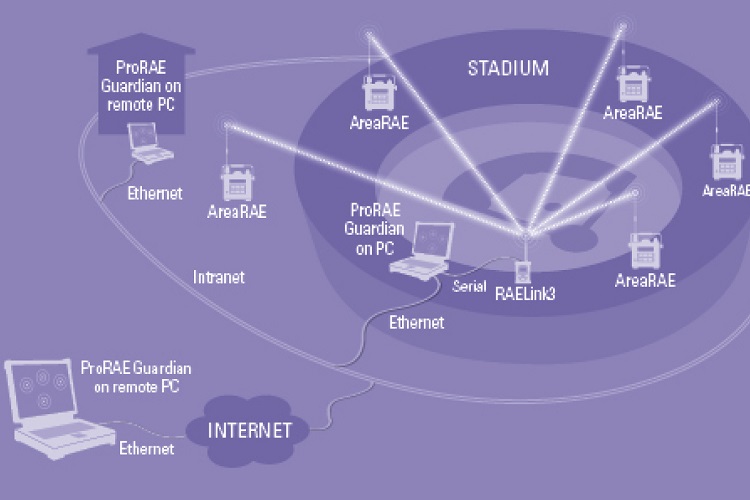
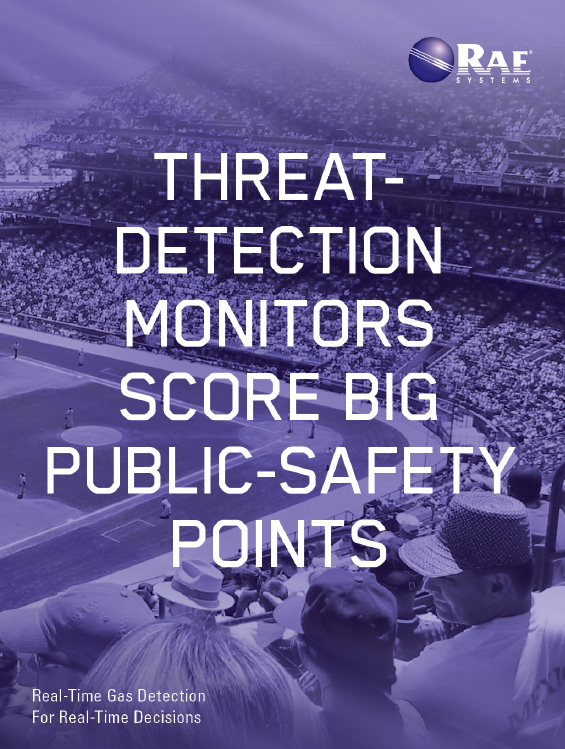
Although few were aware of it, sports fans in Detroit attending the 2005 Super Bowl XL, the 2005 Major League Baseball All-Star game, or the two 2012 World Series games held at Comerica Park in October had an added layer of protection to thwart anyone from concealing dangerous industrial chemicals or deploying the likes of a “dirty bomb.” Such monitoring for potentially toxic gas, radiation or biological releases—in addition to a range of other proactive security tactics designed to keep people safe—is often done at large events, where big crowds and extensive media coverage can make these settings a high-visibility target.
These are just three of the high-profile venues protected by the Detroit (MI) Fire Department (DFD), which often works in cooperation with state and federal authorities, since the department purchased its advanced wireless gas-detection monitoring system in 2004. The system is capable of detecting a range of chemical gases, flammable vapors and radiation that could be used to terrorize attendees at an indoor or outdoor event.
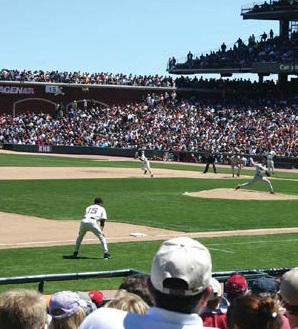 Like many fire and HazMat departments worldwide, the DFD did its planning in advance of the events to ensure the site was safe and secure. That includes coordinating with multijurisdictional agencies, including neighboring departments offering assistance, the U.S. Federal Bureau of Investigatio, which has venue protection as part of its chartered mission, and other agencies.
Like many fire and HazMat departments worldwide, the DFD did its planning in advance of the events to ensure the site was safe and secure. That includes coordinating with multijurisdictional agencies, including neighboring departments offering assistance, the U.S. Federal Bureau of Investigatio, which has venue protection as part of its chartered mission, and other agencies.
“We definitely take a proactive approach to keeping the public safe at these high-profile events,” said Sgt. Erik Carrington, a DFD hazmat expert who was part of the department’s threat-detection monitoring efforts during the 2012 World Series between the San Francisco Giants and the hometown Detroit Tigers. For security reasons, Carrington declined to reveal other city events where threat-detection monitoring is deployed.
The DFD uses the same wireless monitoring technology used to help secure presidential inaugurations or to establish safe perimeters around hazmat incidents or spills. The system can provide commanders with continuous, real-time information, such as exposure levels that get logged wirelessly. These systems are tied to network monitoring software that gives an operations or command center an overview of the system status using a mapped overlay of the facility. Additional software can be added to track gas or vapor plumes, which provides early detection for first responders to alert or evacuate people who are in harm’s way.
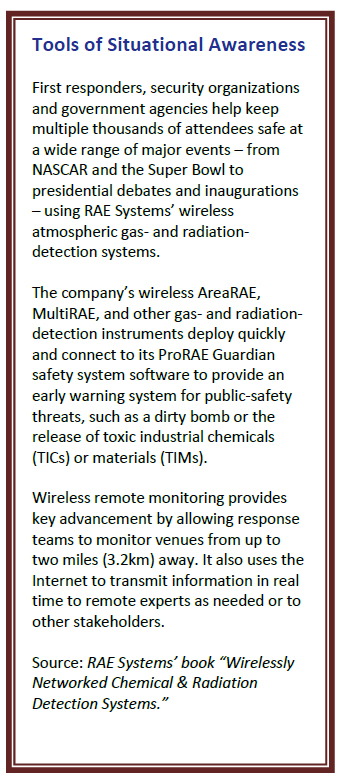 Monitoring Threats Wirelessly
Monitoring Threats Wirelessly
At the World Series championship games in Detroit, wireless monitoring was performed for a broad range of threats, including gas, radiation, and biological elements, reports Carrington.
Chemical disbursements—often considered the biggest threat, say experts, because of the wide availability of some industrial chemicals —was performed using RAE Systems’ AreaRAE multi-gas detectors and monitoring software. U.S. military personnel, environmental agencies and consultants, and hazmat experts worldwide have long relied on the wireless AreaRAE, which can be equipped with a broad range of sensors. First responders often use the system as a frontline detector for public-venue protection applications.
“We believe wireless monitoring is one of the best things around nowadays,” says Carrington. “It enables us to cover a broad area, it’s simple to deploy, and it helps maximize our limited manpower resources.”
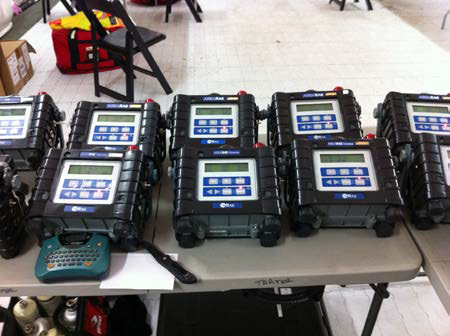
These systems give commanders and safety professionals greater information and control for quickly identifying dangerous substances, making on-the-spot decisions and coordinating information with other units or agencies in real time. Wirelessly enabled instruments from RAE Systems enhance the communication capabilities of first responders, enabling joint operations at the local, state, and federal levels and for information sharing between on-scene commercial and government agencies. Advances in secure Internet access and the ability to get data onto the Internet from almost anywhere have made these real-time interactions possible.
Tools of Situational Awareness
First responders, security organizations and government agencies help keep multiple thousands of attendees safe at a wide range of major events—from NASCAR and the Super Bowl to presidential debates and inaugurations—using RAE Systems’ wireless atmospheric gas- and radiation-detection systems.
The company’s wireless AreaRAE, MultiRAE, and other gas- and radiation-detection instruments deploy quickly and connect to its ProRAE Guardian safety system software to provide an early warning system for public-safety threats, such as a dirty bomb or the release of toxic industrial chemicals or materials.
Wireless remote monitoring provides key advancement by allowing response teams to monitor venues from up to two miles (3.2km) away. It also uses the Internet to transmit information in real time to remote experts as needed or to other stakeholders. (Source: RAE Systems’ book “Wirelessly Networked Chemical & Radiation Detection Systems.”)
Securing the Stadium
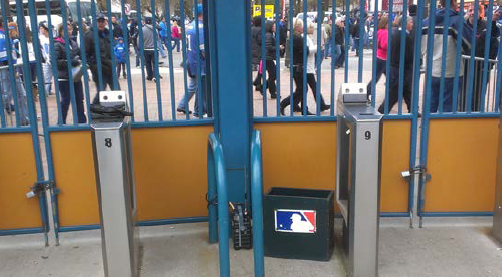 For the DFD team and the other agencies involved, work began in the days leading up to the World Series as the championship games wound down in San Francisco then moved to Detroit. Incoming shipments to the stadium—from souvenirs and equipment to toilet paper—were screened using handheld gas detectors, such as RAE Systems’ MultiRAE, in addition to monitoring loading docks to ensure the fumes from idling diesel trucks did not create an unsafe environment. Park entrances were all monitored including vendors, employees, VIPs, media, and the players and team staff.
For the DFD team and the other agencies involved, work began in the days leading up to the World Series as the championship games wound down in San Francisco then moved to Detroit. Incoming shipments to the stadium—from souvenirs and equipment to toilet paper—were screened using handheld gas detectors, such as RAE Systems’ MultiRAE, in addition to monitoring loading docks to ensure the fumes from idling diesel trucks did not create an unsafe environment. Park entrances were all monitored including vendors, employees, VIPs, media, and the players and team staff.
Thirty-two AreaRAE monitors were equipped with sensors for gamma radiation, lower explosive limit vapors, volatile organic compounds, and two other undisclosed sensors. These units were inconspicuously placed in strategic areas throughout Comerica Park that also optimized the radio transmission back to the onsite operations center. The units were placed and the system was up and running in about an hour, says Carrington.
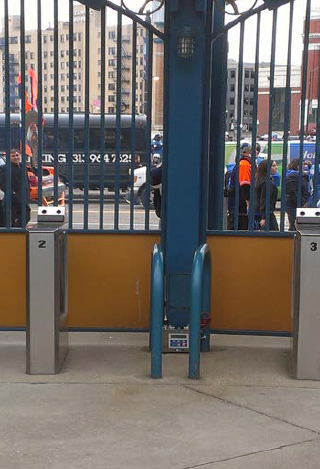 On game days, the status on each of the monitors—which were placed throughout the complex—was overseen on a map of the stadium on a computer at the operation’s center. “If you have an alarm, the software can pinpoint the area so we can concentrate in that area until we find the individual or product,” Carrington says.
On game days, the status on each of the monitors—which were placed throughout the complex—was overseen on a map of the stadium on a computer at the operation’s center. “If you have an alarm, the software can pinpoint the area so we can concentrate in that area until we find the individual or product,” Carrington says.
The detectors didn’t alarm during the games, but the Detroit team has had hits in the past with readings for higher-than-normal radiation. During those incidents, it was discovered the individuals had recently undergone medical stress tests using barium, a radioactive material.
Dimitri Pervolarakis of Argus-Hazco, a detection instrumentation safety company, provided support by helping the Detroit team set up the AreaRAE detectors by doing maintenance calibration and sensor replacements.
“The Detroit team has used this system before, so some of what we covered was review,” says Pervolarakis. “The City of Detroit really has a good group of responders who know what it takes to protect its citizens and visitors attending these big, attention-grabbing games and events.”
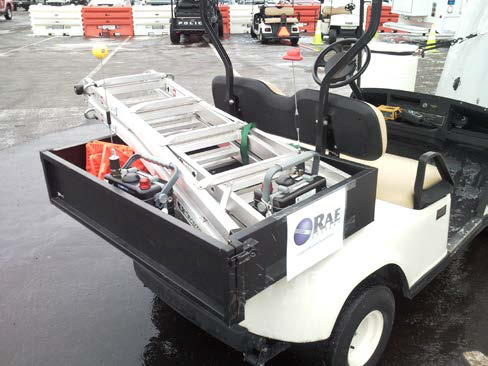
Learn More: Additional Useful Information and Ideas
- Download your free Venue Protection Checklist now HERE (http://bit.ly/noq7CO).
- Register for a free Event Hazard Assessment HERE (raesystems.com/public-event).
- Read about how RAE Systems protected the NFL Super Bowl, Kentucky Derby and other major and local events HERE (raesystems.com/public-event).
- Download an eBook on Event Radiation Detection HERE (http://www.raesystems.com/radiation-white-paper).
- For further information on how to safeguard buildings from CBRN events and how to respond to CBRN events, please reference the following documents: a) National Institute for Occupational Safety and Health (NIOSH), Guidance for Protecting Building Environments from Airborne Chemical, Biological, or Radiological Attacks, 2002, b) Lawrence Berkeley National Laboratory, Protecting Buildings from a Biological or Chemical Attack: Actions to Take Before or During a Release, LBNL/PUB-51959, 2003, c) US Army Corps of Engineers Protective Design Center, Protecting Buildings and Their Occupants from Airborne Hazards, Technical Instruction 853-01, 2001.
Copyright © 2013 RAE Systems, Inc. All rights reserved. RAE Systems and the RAE Systems logo are registered trademarks of RAE Systems, Inc.
About RAE Systems Inc.
 RAE Systems is a global sensor and wireless-system innovator that designs and manufactures a full line of fixed, portable, handheld and personal chemical- and radiation-detection instruments. The company’s life- and health-saving detectors are used in 120 countries by many of the world’s leading industrial corporations, first responders and government agencies. The company offers a wide range of rugged, yet easy-to-use monitors that enable continuous, real-time safety- and security-threat detection in nearly every environment, along with wirelessly connected solutions that lead the industry in performance and reliability. RAE Systems’ intrinsically safe and globally certified monitors help elevate safety for workers, responders and the public at large; reduce project downtime; and maintain regulation compliance.
RAE Systems is a global sensor and wireless-system innovator that designs and manufactures a full line of fixed, portable, handheld and personal chemical- and radiation-detection instruments. The company’s life- and health-saving detectors are used in 120 countries by many of the world’s leading industrial corporations, first responders and government agencies. The company offers a wide range of rugged, yet easy-to-use monitors that enable continuous, real-time safety- and security-threat detection in nearly every environment, along with wirelessly connected solutions that lead the industry in performance and reliability. RAE Systems’ intrinsically safe and globally certified monitors help elevate safety for workers, responders and the public at large; reduce project downtime; and maintain regulation compliance.
RAE Systems offers a variety of chemical, biological, radiological, and nuclear (CBRN) rapidly deployable and custom-configurable sensor solutions for incident response and public-venue monitoring. RAE Systems delivers cohesive, wirelessly connected threat-detection solutions that create a layered defense against CBRN threats and other gas and combustible risks at major venues.
RAE Systems’ chemical- and radiation-detection equipment provides rapid, scalable and highly adaptable deployment at a wide variety of locations that require additional security against terrorist or accidental threats.
RAE Systems’ experienced technical-detection consultants use the company’s wide range of gas- and radiation-detection solutions to deliver around-the-clock monitoring for planned or accidental deadly atmospheric gas releases and potential airborne attacks. RAE Systems’ solutions to venue protection are:
- Versatile: RAE Systems’ easily deployable fixed and portable monitors placed in sensitive areas transmit sensor information in real-time to a central location for quick interpretation, analysis and action.
- Wireless: Wireless atmospheric monitoring that utilizes cost-effective equipment that is easy to install and operate can assist event officials and first responders with real-time information on potential hazards.
- Proven: With more than 20+ years of experience, RAE Systems’ innovative solutions have a verified track record.

